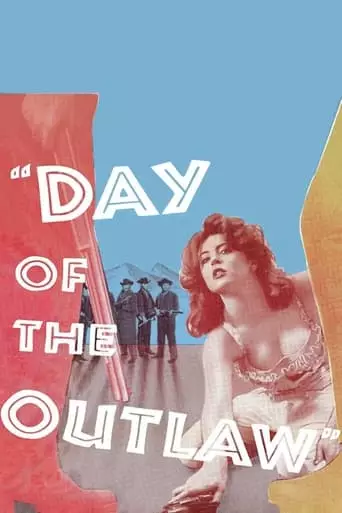
Blaise Starrett is a rancher at odds with homesteaders when outlaws hold up the small town. The outlaws are held in check only by their notorious leader, but he is diagnosed with a fatal wound and the town is a powder keg waiting to blow.
Day of the Outlaw is a 1959 American Western film directed by André de Toth, featuring Robert Ryan as Blaise Starrett, a rancher in a small Wyoming town. The narrative unfolds in the winter of 1899, where Starrett is embroiled in a conflict with homesteader Hal Crane, who has erected a barbed-wire fence that disrupts Starrett’s cattle drives. This tension sets the stage for a classic Western showdown.
The plot takes a dramatic turn when Captain Jack Bruhn, portrayed by Burl Ives, and his gang of outlaws arrive in the town, seeking refuge from a pursuing posse. Bruhn, a former cavalry officer turned outlaw, exerts control over the town, holding its residents hostage. The outlaws’ presence escalates the existing tensions, forcing Starrett and Crane to confront their personal animosities and collaborate for the town’s survival.
As the story progresses, the town becomes a microcosm of societal breakdown under the pressure of external threats. The residents’ vulnerabilities and moral complexities are exposed, leading to a series of confrontations that challenge their notions of honor, survival, and community. The film’s stark black-and-white cinematography and snowbound setting amplify the isolation and desolation experienced by the characters.
Upon its release, Day of the Outlaw received critical acclaim for its atmospheric storytelling and complex character portrayals. The film’s stark depiction of the Western genre, combined with its moral depth, set it apart from traditional Westerns of the era. Critics praised the film for its realistic portrayal of the psychological and emotional challenges faced by its characters. The film’s impact extended beyond cinema, influencing discussions on the human condition and the complexities of morality in extreme circumstances.
The film’s realistic depiction of military life and the psychological effects of war has made it a valuable resource in military training. It has been used to teach leadership principles and the importance of understanding the human element in command decisions. The film’s impact extends beyond cinema, influencing discussions on military leadership and the mental health of service members.
After viewing Day of the Outlaw, you may experience a profound sense of introspection and contemplation. The film’s exploration of moral ambiguity and human nature prompts viewers to reflect on the complexities of right and wrong, as well as the capacity for change and redemption. The stark visuals and intense performances leave a lasting impression, evoking a range of emotions from empathy to discomfort. The film’s unflinching portrayal of human nature and survival in extreme circumstances may leave you feeling a mix of awe and contemplation. The tension between personal desires and collective survival, especially in the face of external threats, may prompt you to think about how far people are willing to go for self-preservation and the limits of human morality.
The psychological depth of the characters, particularly Blaise Starrett and Captain Bruhn, might evoke a sense of empathy for their struggles, as well as a deeper understanding of the complexities of their actions. The film forces you to question the notion of heroism and villainy, as the characters’ moral decisions become blurred in the face of survival and redemption.
By the end of the film, you might feel a sense of melancholy, as the story doesn’t provide a clear-cut resolution but instead leaves you with the lingering question of what it means to be human in such dire circumstances. The film’s bleak atmosphere, combined with its moral exploration, could make you reflect on the nature of justice, survival, and human flaws. Ultimately, Day of the Outlaw is a thought-provoking film that will likely stay with you long after the credits roll, prompting you to reflect on the complexities of human behavior and the harsh realities of life in the Old West.
